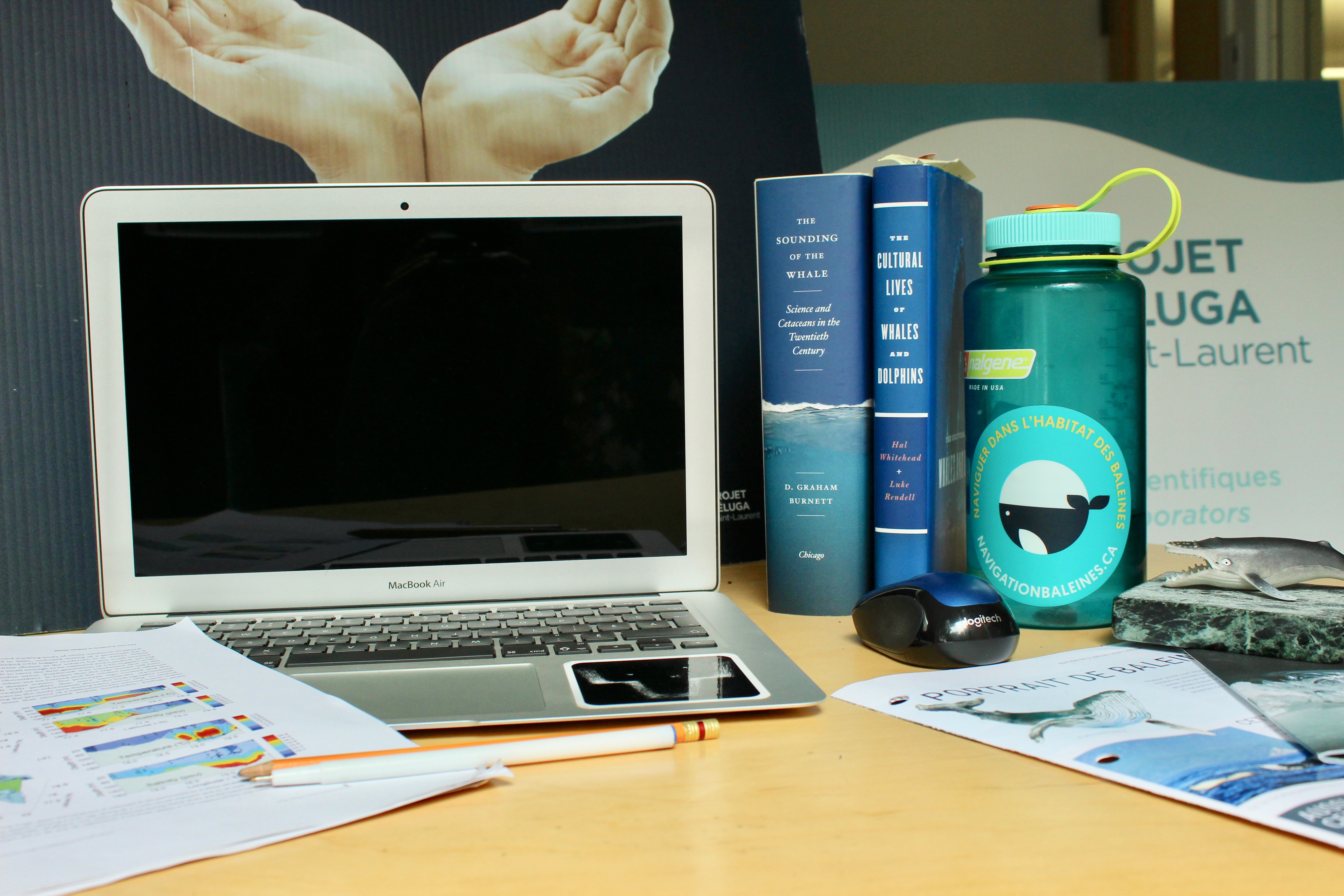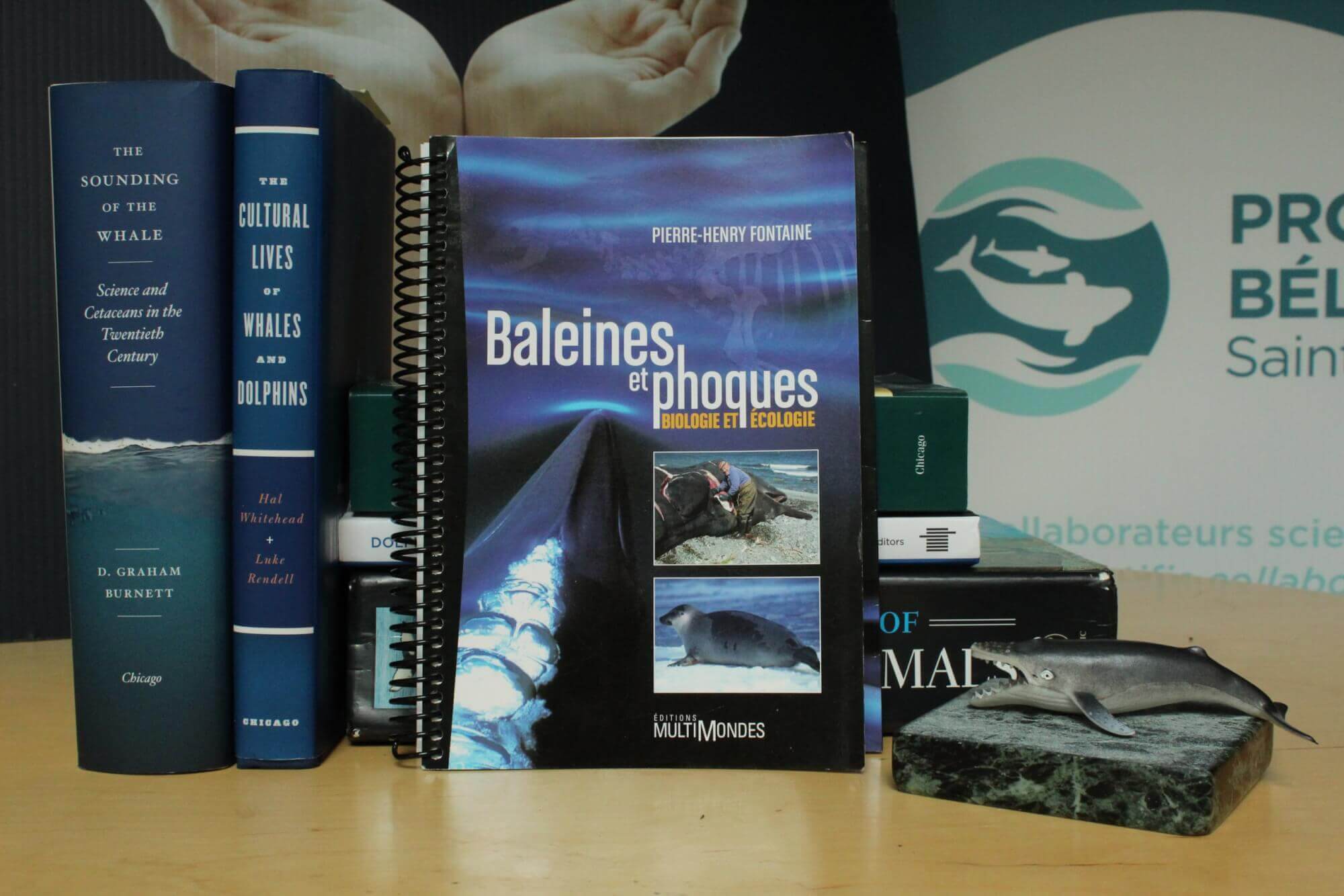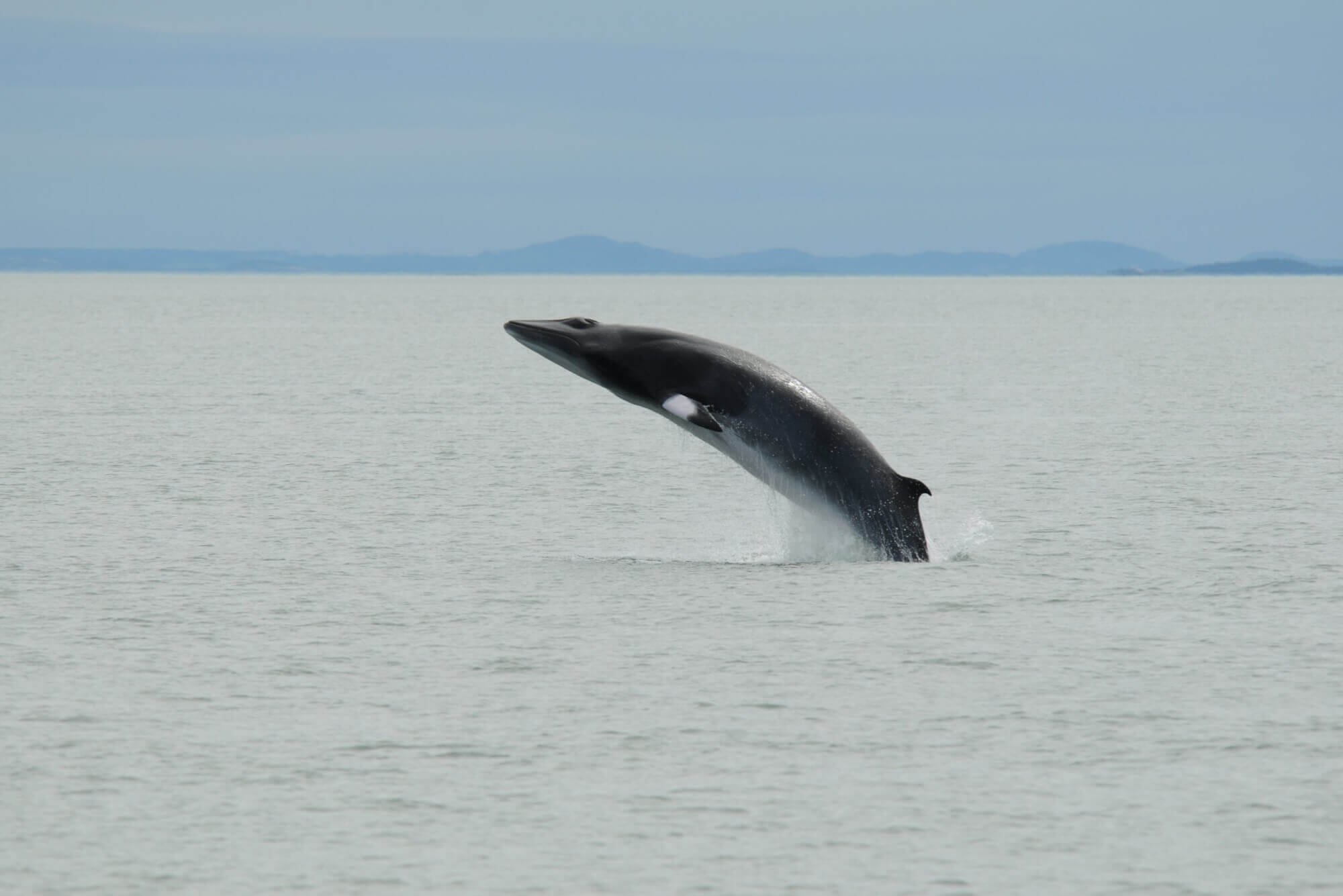In my after-work hours, I write poetry. Drafting texts on whales is quite new to me. When I joined the Whales Online team in June, I was excited about tackling the challenge of popularizing science, but I didn’t yet know how I was going to go about it! What follows is a step-by-step guide to writing an article.
1. Find a new study
On my first day of work, my colleague Laure told me about an article to write which, in her eyes, would suit me perfectly: the idea was to summarize recent studies on the evolution of humpback whale songs across time and populations. Why me? Because I’m a musician, of course! With our editor-in-chief Jeanne, we agree that I will undertake this task “when I feel ready.”
2. Feel ready
Four weeks and three published articles later, I decide to start gathering information on my topic. I start by leafing through the book Whales and Seals by Pierre-Henry Fontaine, my new bible. In this work, I read everything I can about sound production, communication and the purpose of singing in humpback whales. Next, I flip through the index of the Encyclopedia of Marine Mammals, my other bible, scanning for the words “song,” “communication” and “transmission.” I read and read and read.
3. Conquer sleep
Once I had gone through all the material providing me with “peripheral” information, I decide to start looking through scientific papers. What? 15 pages, 25 pages, 35 pages! Alone in the dimly-lit office, I struggle to keep my eyes open. With their technical jargon and uninspired structure, I suspect that scientific studies have unparallelled sleep-inducing properties. The trick to staying awake is to read aloud, and highlight what is important in order to stay alert.
4. Panic (intermediate step)
I soon realize that despite all my reading, I haven’t quite understood everything and that I need some explanations from a professional.
5. Write to the researcher
Having spotted the author’s email address at the bottom of the last page of the study, I contact him to request an interview. He replies almost immediately… to let me know that he doesn’t have much time in the short term, but that we can try to arrange a date. I excitedly send him my availability and offer him various means of communication. I take about an hour to write my 100-word message, as I want to demonstrate my impeccable command of English.
About ten days later, I finally have a date and time to pencil in my calendar as well as a Zoom link to click on when the time arrives.
6. Prepare for the interview
I make a list of points to cover during the call and prepare my most important queries in advance. I divide my (countless) questions into a logical sequence of four categories. I reread all my notes over and over, and even browse through the studies one last time. This time, I’m not sleepy at all! I’m on the lookout for any information I might find useful in my conversation with the scientist.
7. Meet with the researcher
All morning long, I can’t sit still, and I can’t concentrate on anything! Finally, the time has come; a little stressed, I connect to Zoom. All in all, the researcher is very pleasant! He gives me excellent examples to help me understand concepts that I hadn’t quite grasped, and we go through all of my questions! He gives me an hour of his time. I hang up and feel relieved.
8. Write (finally!)
After my interview, I write the first draft of my article in one day. I type non-stop on my keyboard. I finally feel like I know my topic like the back of my hand and have all the resources I need to write an engaging article.
9. Write too much
Oops! Once completed, my draft contains 2,200 words! Whales Online articles almost never exceed 1,000 words. I need to cut out half of the content! What a nightmare!
10. End up writing two articles
After racking my brain for nearly two weeks, I finally finish this arduous exercise. Ultimately, I wind up splitting my article into two parts: Conceiving the Inconceivable, Parts 1 and 2 . This approach saved me from having to delete half the information I had gathered! In order to maintain a balance in my article, I also added in a few places the viewpoint of a researcher defending the opposite hypothesis of that of the researcher with whom I spoke. All I need to do is find a couple of images to upload, and voilà!
If you want to read them:
Conceiving the Inconceivable (1/2): Metamorphosis of Humpback Whale Songs
Conceiving the Inconceivable (2/2): Templates for Humpback Whale Songs








